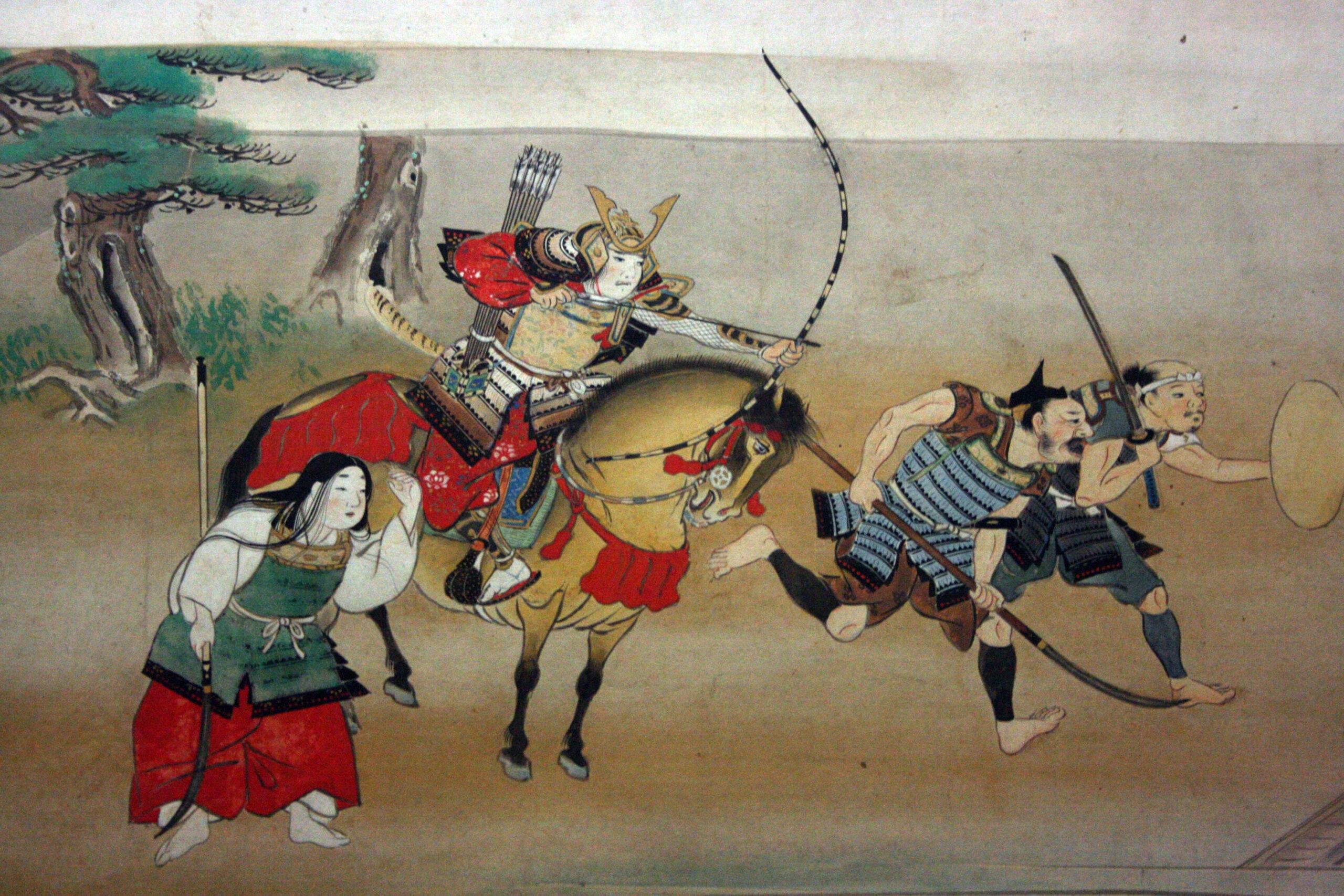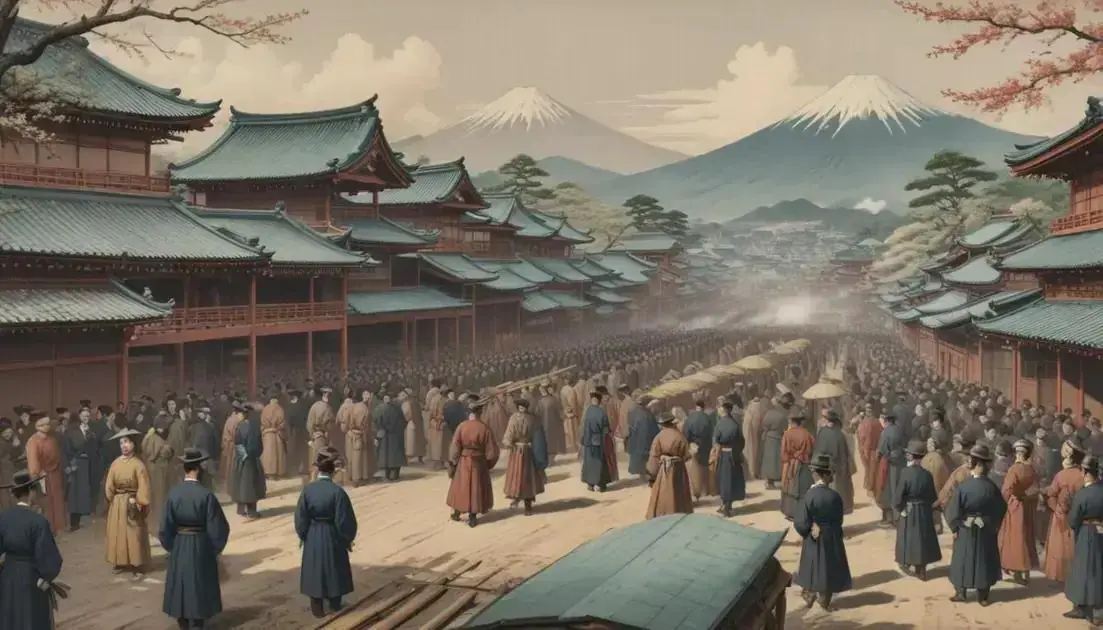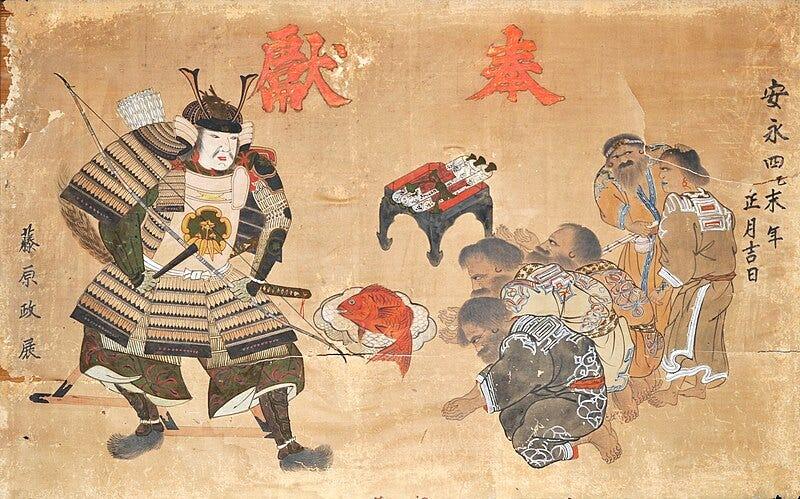
The Role of the Samurai in Shaping Japanese Feudal Society
The samurai class held a pivotal role in shaping Japanese feudal society, leaving an indelible mark on the nation’s history, culture, and politics. For over seven centuries, from the late 12th century to the Meiji Restoration of 1868, the samurai dominated Japanese society, influencing every facet of life, from governance and economics to art, literature, and even the very values and ethics of the people. This in-depth exploration will delve into the profound samurai influence on Japanese feudal society, examining their role in shaping the nation’s social hierarchy, political structures, economic systems, cultural expressions, and deeply ingrained values. We will uncover not only their military prowess but also their surprising contributions to the arts, philosophy, and the very fabric of Japanese identity.
The Rise of the Samurai Class: From Warriors to Elite
The emergence of the samurai class coincided with a period of intense upheaval in Japan. The Heian period (794-1185), characterized by a powerful aristocracy and a relatively weak central government, saw frequent internal conflicts and the gradual erosion of centralized authority. The weakening of the imperial court created power vacuums that local warlords, bushi, eagerly filled. These bushi, initially mounted warriors providing military service to powerful landowners, were the precursors to the samurai.
The late Heian and early Kamakura periods witnessed a series of brutal civil wars, the Genpei War (1180-1185) being a particularly pivotal conflict. The Minamoto clan, led by the astute Minamoto no Yoritomo, ultimately emerged victorious, establishing the Kamakura shogunate in 1185. This marked a significant turning point, ushering in the samurai era and establishing a military dictatorship that fundamentally altered the political landscape of Japan. Yoritomo’s victory solidified the samurai’s position as the ruling military elite.
The samurai’s ascension to power wasn’t solely due to military might; it was a complex interplay of factors. Their superior combat skills, honed through rigorous training and discipline, were undeniably crucial. However, equally important was their loyalty, their organizational structure within clans, and their developing ethos. The concept of bushido, the “way of the warrior,” began to coalesce during this era. While not a formally codified set of rules until much later, its core principles – courage, loyalty, honor, self-discipline, and a strong sense of duty – became central to samurai identity and social behavior. These values underpinned their rise and shaped their lasting influence on Japanese society. The initial focus on military prowess gradually transitioned to broader influence in governance, administration, and even artistic and cultural pursuits.
The Kamakura period, characterized by samurai dominance, saw the establishment of a new social order. While the Emperor still held a symbolic position as the head of state, real power resided with the shogun, the supreme military commander. This established a precedent that continued throughout the subsequent Muromachi and Edo periods, underscoring the samurai’s enduring political influence.
Samurai Influence on Japanese Politics: The Shogunate and Beyond
The samurai’s impact on Japanese politics was profound and long-lasting. The Kamakura shogunate, the first true samurai-dominated government, laid the foundation for centuries of military rule. The shogunate system created a decentralized feudal system, with powerful regional lords, daimyo, controlling vast territories and wielding considerable influence within their domains. These daimyo relied on their samurai retainers for military strength and administrative support.
The Muromachi period (1336-1573) saw a period of internal strife and weakening of centralized authority, with the Ashikaga shogunate struggling to maintain control over rebellious daimyo. This period, often characterized by near-constant warfare, highlights the enduring power of the samurai in shaping regional power dynamics. Smaller-scale conflicts and internal disputes were often resolved by samurai conflict, further cementing their position within the social and political landscape.
The Sengoku period (mid-15th to early 17th century), or “Warring States period,” was one of the most violent and tumultuous eras in Japanese history. Powerful daimyo clashed in a relentless struggle for supremacy. This period produced iconic samurai figures, such as Oda Nobunaga, Toyotomi Hideyoshi, and Tokugawa Ieyasu, who through military genius and political acumen, ultimately paved the way for the unification of Japan under the Tokugawa shogunate.
The Tokugawa shogunate (1603-1867) ushered in a period of relative peace and stability, known as the Edo period. Under Tokugawa Ieyasu’s shrewd leadership, a strict social hierarchy known as the shi-no-ko-sho system was established. The samurai were firmly at the apex of this hierarchy, enjoying a privileged position and wielding considerable political power within their domains. This hierarchical structure greatly influenced social relations and economic activities for centuries to come.
The Economic Impact of the Samurai Class: Land, Power, and Patronage
The samurai’s influence wasn’t limited to politics; it permeated the Japanese economy. As the dominant military class, they controlled vast tracts of land and received stipends from the daimyo they served. These stipends, initially paid in rice, represented their economic power and formed the basis of their lifestyle. The samurai’s economic position was intrinsically linked to their political power, influencing land ownership, taxation, and trade within their respective territories.
During the Edo period, the daimyo, with their samurai retainers, actively participated in the economy. They managed their domains, oversaw agricultural production, and often controlled local markets. This influence wasn’t merely passive; they actively shaped economic policies, encouraged certain industries, and regulated trade within their territories. This ensured a degree of self-sufficiency within each domain, while also contributing to a complex nationwide network of trade and commerce.
The samurai also played a role in the development of Japan’s financial systems. While merchants and financiers handled much of the daily economic transactions, the samurai’s authority and influence helped maintain a degree of stability and order within the financial world. Their power and social status ensured the enforcement of contracts and the resolution of economic disputes, contributing to a relatively stable (though often inequitable) economic system.
The Cultural Legacy of the Samurai: Bushido and Artistic Patronage
The samurai’s impact on Japanese culture is equally profound. Bushido, while initially an informal code, evolved into a complex philosophy that profoundly shaped Japanese values and aesthetics. It transcended mere martial principles, encompassing ideals of loyalty, honor, self-sacrifice, and self-discipline. These values extended beyond the battlefield, shaping social interactions, artistic expression, and literary themes.
Samurai were significant patrons of the arts. Many daimyo actively supported artists, writers, and artisans, fostering cultural flourishing within their domains. This patronage led to significant advancements in various artistic fields, including painting (particularly ukiyo-e woodblock prints), calligraphy, pottery, swordsmithing, and tea ceremony. The aesthetic sensibilities of the samurai class influenced the very style and substance of these artistic endeavors. The emphasis on discipline and precision in martial arts found expression in the refined elegance and technical mastery observed in various artistic forms.
The literature of the samurai era frequently explored themes of loyalty, honor, and the moral dilemmas faced by warriors. Classic works, such as the Tale of the Heike, depict the lives and struggles of samurai clans, illustrating the ethical complexities of their world. These literary works helped shape the popular image of the samurai, contributing to the enduring fascination with their lives and values.
The Decline of the Samurai Class and the Meiji Restoration
The Meiji Restoration of 1868 marked the end of the Tokugawa shogunate and the beginning of Japan’s rapid modernization. The samurai class, once the bedrock of power, faced significant changes. The newly established Meiji government abolished the samurai class and established a conscript army, effectively dismantling the traditional feudal system. This transition was not without conflict, as some samurai resisted the changes, leading to uprisings and social unrest.
However, the abolition of the samurai class didn’t erase their influence. The values of bushido – loyalty, self-discipline, and honor – continued to resonate within Japanese society, albeit in transformed forms. Many samurai adapted to the new era, entering politics, business, or the military. The values of diligence and dedication, deeply embedded within the samurai ethos, contributed to Japan’s rapid economic and industrial growth during the Meiji period.
Conclusion: A Lasting Legacy
The samurai’s influence on Japanese society was transformative and far-reaching. Their role extended far beyond their military function; they were integral to the political, economic, and cultural development of Japan for centuries. Their code of bushido instilled values that continue to shape the Japanese character: discipline, loyalty, and a dedication to duty. Even after their formal abolition, the samurai’s legacy persists, shaping the national identity and contributing to the unique cultural fabric of Japan. Their story, rife with tales of honor, conflict, and societal transformation, serves as a powerful lens through which to understand the intricate history and enduring cultural heritage of Japan. The samurai’s influence remains a vital aspect of Japanese identity and continues to capture the imaginations of people across the globe, a testament to their lasting impact on history and culture.


